I have this habit of shooting against the sun at dawn and dusk – I think it must be a natural aversion to having the light source directly behind me, which it otherwise would have been had I been facing the other way. I didn’t consciously curate the images this way, but it turns out pretty much everything from the early morning and late night sessions in Ooty were shot contra-jour; there’s something about the light hitting the mist or dust or other particulates trapped between hills and creating nicely recursive (and slowly vanishing) layers into the distance. I could probably have used an EVF in some of these situations to avoid going temporarily blind… Enjoy! MT
This series was shot with a Hasselblad 501CM, CFV-50C and processed with Photoshop Workflow II.
__________________
The Singapore Architectural Masterclass from 1-7 July 2016 is now open for booking. Click here for more details and to book.
__________________
Ultraprints from this series are available on request here
__________________
Visit the Teaching Store to up your photographic game – including workshop and Photoshop Workflow videos and the customized Email School of Photography. You can also support the site by purchasing from B&H and Amazon – thanks!
We are also on Facebook and there is a curated reader Flickr pool.
Images and content copyright Ming Thein | mingthein.com 2012 onwards. All rights reserved
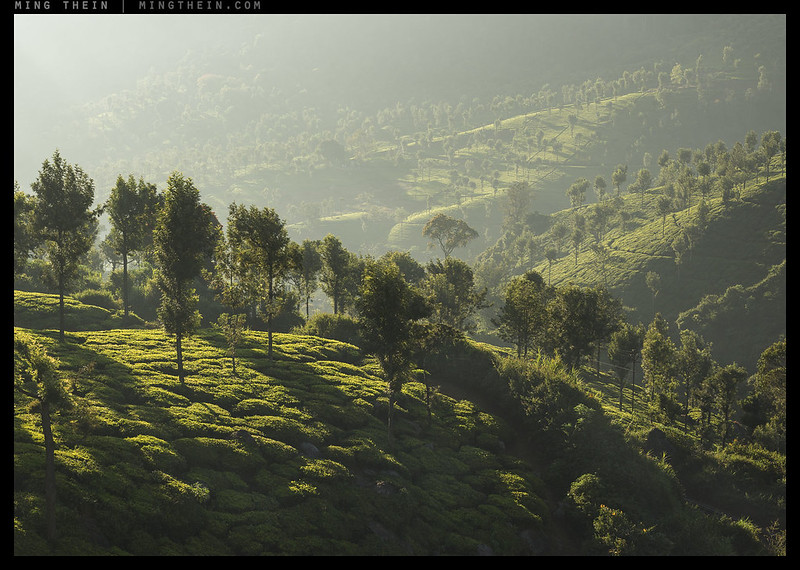

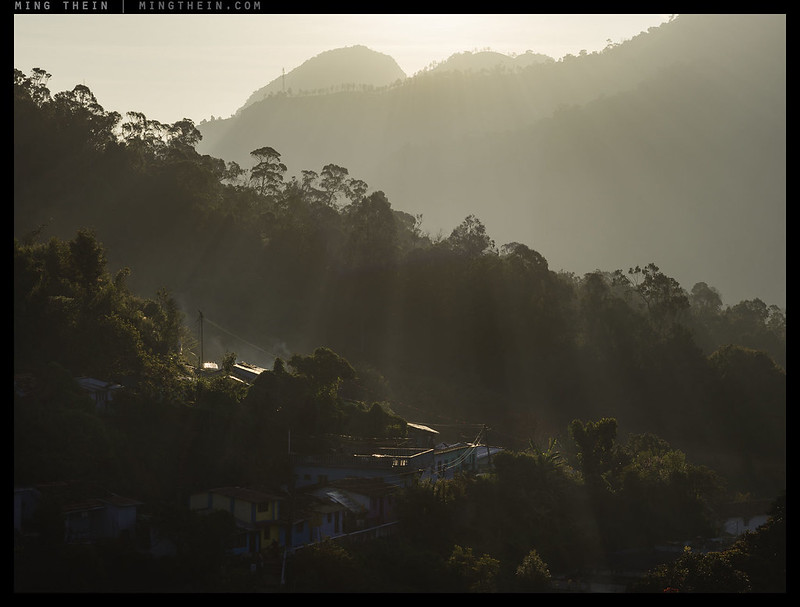
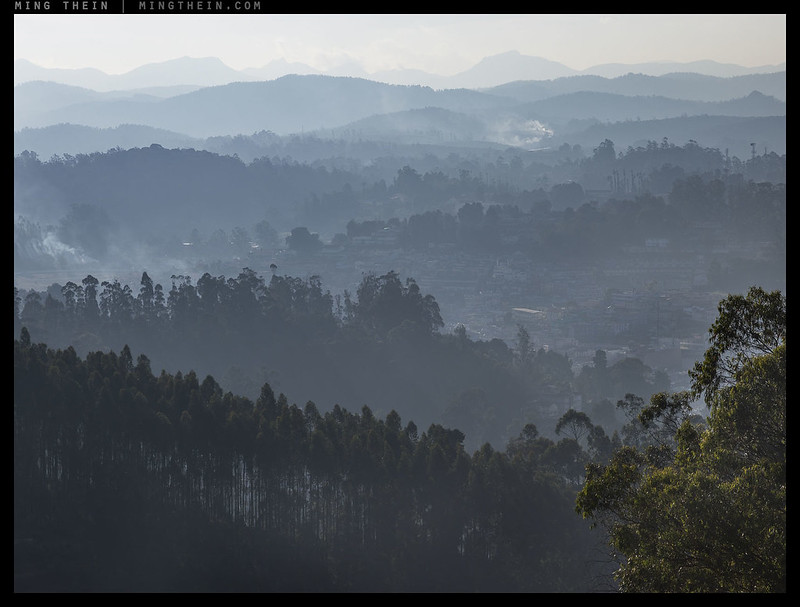
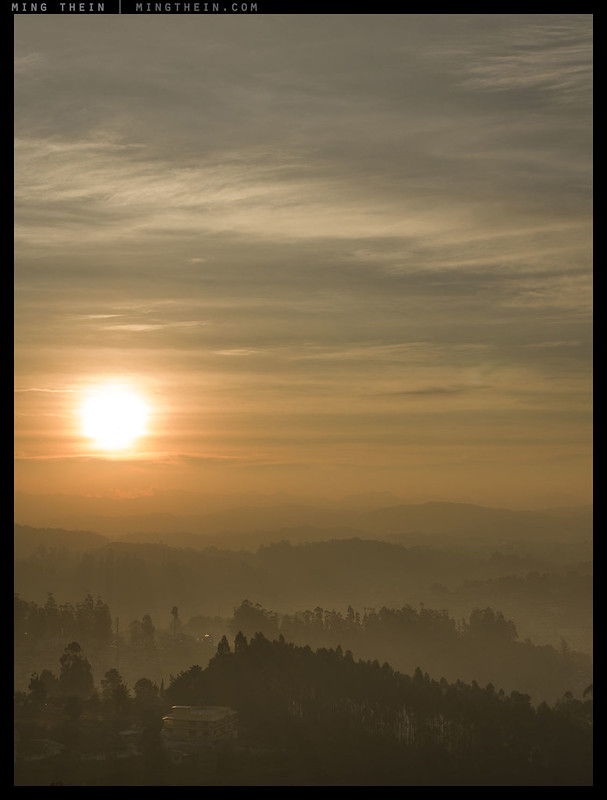
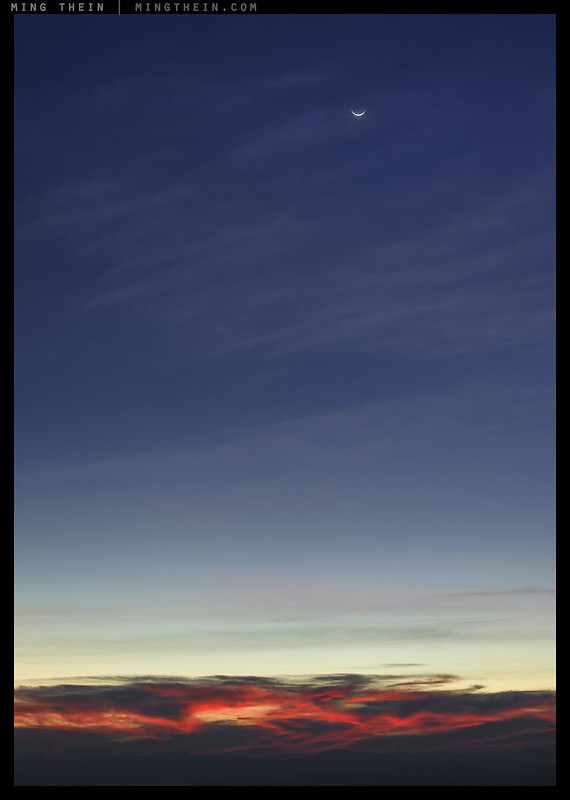
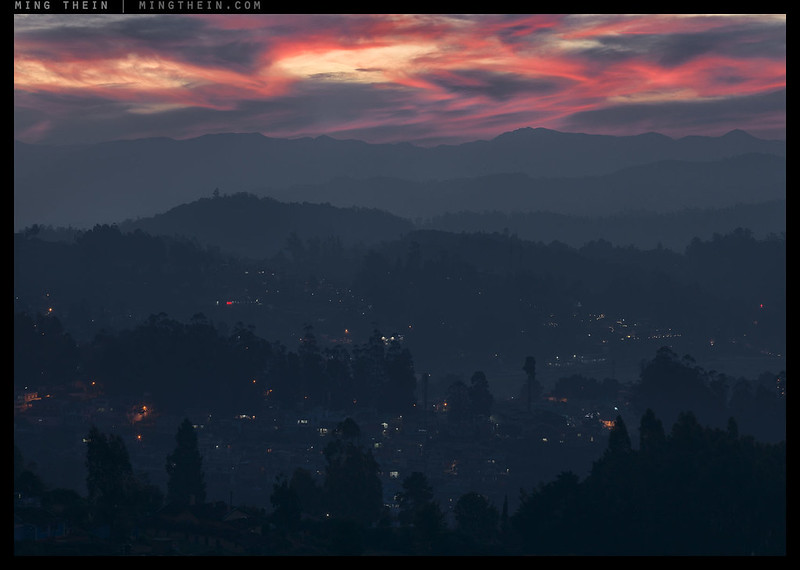
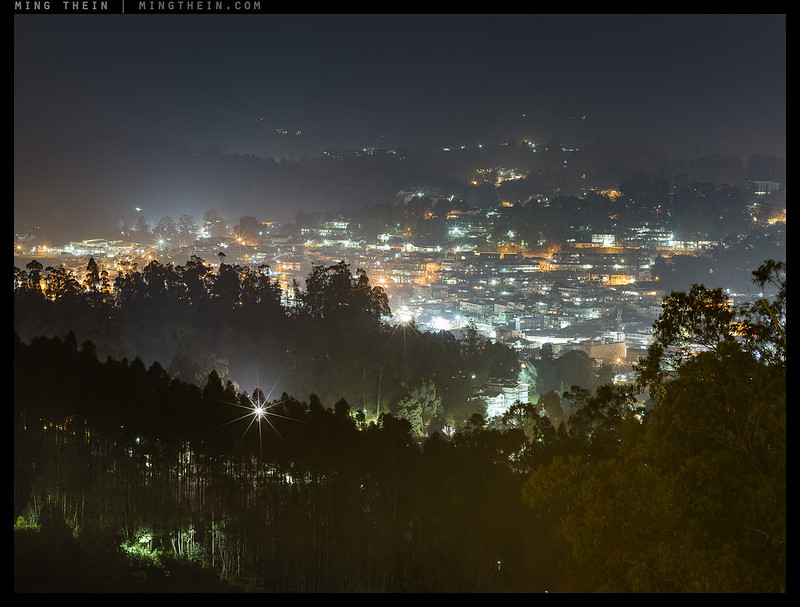
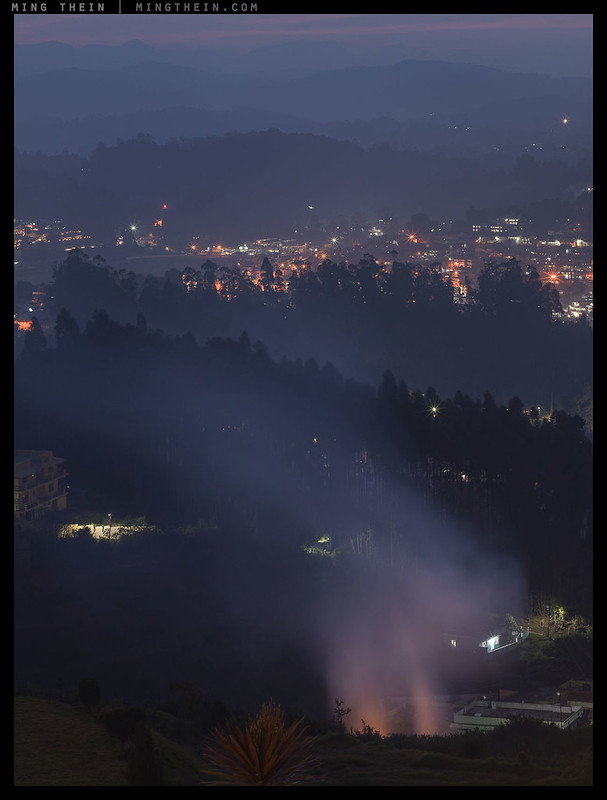

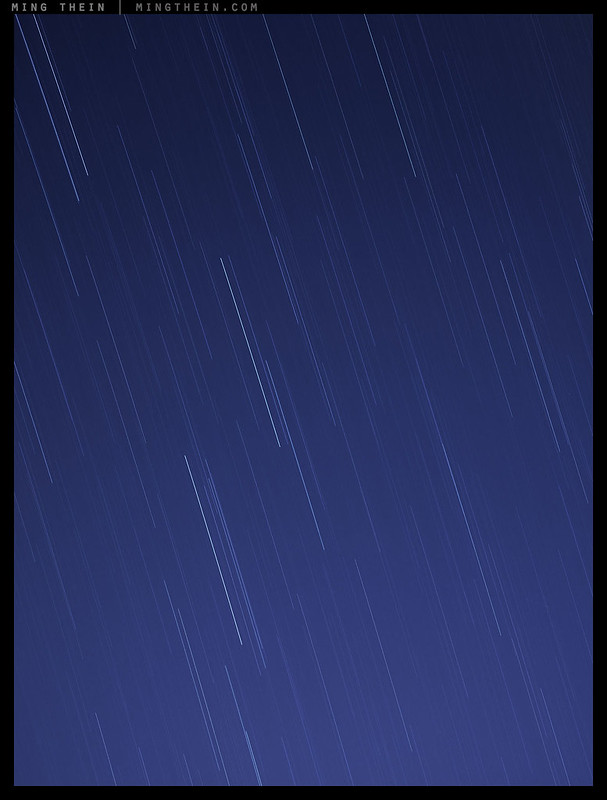





Hello Ming.
A splendid collection. “Dusk” is such an accurate and appropriate part of the heading as it conveys the sense of misty, hazy, shadowy, dim, dark scenes that bind the images together, perhaps with the exception of the last one, which is tied to the previous one through their common thread of celestial subjects and the passage of time. The progression from late afternoon to the middle of the night or early hours of the morning is brilliantly documented through your curation.
From a technical standpoint, I would be extremely grateful if you could share any recollections that you might have for two of the photographs. I can see the ISO that was used, and that you used your Hasselblad CFV-50c/500 combination. But can you recall the lens, aperture, and exposure times for these two images?
– Looking down on a town at night.
– B0001990 copy
– https://www.flickr.com/photos/mingthein/24609080870/in/photostream/
– ISO 100
– Lens, aperture, and exposure time?
– Star trails
– B0001997 copy
– https://www.flickr.com/photos/mingthein/24277676453/in/photostream/
– ISO 400
– Lens, aperture, and exposure time?
I have had my CFV-50c (CMOS) for a week now, and it has exceeded my high expectations for the experience that it provides, the resolution, and the expansion of photographic opportunities over those from my CFV II 16MP (CCD) digital back.
🙂 … MomentsForZen (Richard)
Now you’re putting me on the spot 🙂 As you know, the V doesn’t record EXIF data since there’s no electronic coupling; the best you’re going to do is if you’re using the sync cord to connect lens to back for long exposures. Best guesses:
1990 – I’m guessing 30sec, and I’d have used the CF 150 (only long lens I had on that trip) at f8 or f11.
1997 – f4, 80mm, 30min – I remember this because I had to go to ISO 400 because I was at the limit of what the back could do in terms of duration.
Sorry I can’t be more helpful. But glad to hear you’re enjoying the new back – just remember to expose to the right always, and then adjust exposure down afterwards – otherwise you’re not going to make use of all the dynamic range the back has to offer.
Thank-you for the information.
1990 – These settings and the lens selection make sense given my own experiences. The 150mm CF lens is lovely for many landscape applications when combined with the cropping applied by the CFV-50c sensor. The stars radiating from bright point features suggested that the aperture wasn’t totally open (i.e., at f4 or f5.6).
1997 – A wonderfully clean result with a very nice blue sky. Was this done leading up to dawn (i.e., with Blue Hour lighting)? Or by adjustment of the temperature/tint to give the sky this color?
I am always confused when people talk about exposing to the right or left. Are you advising me to “blow out” the highlights and recover them in post-processing? This is counter to much of the advice handed out with respect to digital sensors. Most people advise to avoid “clipping” the highlights and to bring up the details in the shadows during post processing.
And just one more question, if I may :-). Do you use standard lens profile corrections for vignetting and geometry distortion when converting and processing raw files? I use Lightroom for my initial processing, and it offers this option. The only problem is that I can’t find the Zeiss/Hasselblad V-series lenses in the drop-down list of options. These would be the same options available with Camera Raw that you use, I believe?
Thank-you so much for your willingness to share your knowledge and your inspiring photographs.
🙂 … MomentsForZen (Richard)
1997: blue hour, after sunset.
ETTR: expose to the point your highlights just clip, even if your final intention is lower key/ darker.
I use ACR’s profiles for the H lenses; there are no profiles for V lenses – but other than correcting vignetting and CA, the rest is fairly minor so I generally don’t bother.
Thanks once more. The clarification on timing of the photograph, ETTR, and lens profiles for H lenses but not V lenses is very much appreciated.
Hope that the light in your location is good for photography today …
🙂 … MomentsForZen (Richard)
No shooting today – supervising contractors fixing things in the place we just moved to, and patching the rest of the portfolio site…
i’ve never heard of Ooty but now i want to go there! What made you choose that part of India for photography?
Recommendation of a friend, and the Nilgris ranges…
Pure inspiration.
Thanks!
Excellent set. However I have comment about one picture (nighttime city pic without clouds and a big sunstar from point light). The city lit area seems a little washed out. Some more highlight recovery needed?
That’s smoke/haze. I elected not to remove it as it lost atmosphere and that sensation of distance.
Wow! That is jaw dropping gorgeous.
Thanks!
You’ve captured this amazing scenery beautifully!
Thank you.
Aah ! ( just smiling .. )
Well, I hope I did it justice!
To my amateur’s eyes you most certainly did … immersive!
Hey Ming,
really nice set of images. They make a really nice set. I could see myself using them for a calendar… That said, is there something wrong with the compression? I see artifacts in nearly all of them, especially in the one with the solitary moon. That’s not how your images usually appear.
Cheers
Are you sure you’re not seeing the subtle cloud bands?
click on it to look in flickr. This looks like usual jpeg compression to me.
It’s better on flickr, but I still see it. Its visible at the very bottom at the frame, in the center where there is a slightly brighter layer of blue.
It’s not visible in the full size version. Probably JPEG compression during downsizing to web size.
Such a beautiful set of images. 👏🏾😊
Thanks!
EVF? – surely most of them were shot on a tripod, Ming, and live view on the screen would avoid the risk to your eyes. We are all cautioned to be wary of overdoing shots directly at the sun of course, because that can also affect the camera – “all things in moderation”? OK in the softer light of sunrise or sunset?
That said – I love your photos (as always – LOL), thanks for sharing them.
No EVF on a Hasselblad V. I wore sunglasses.
Beautiful scenery! 🙂
Thanks!
Nice work! (as always)
I recognize the contre-jour habit in my own photography; I think it’s one of the nicest ways to light a scene.
It’s all about the long shadows 🙂
– and the shimmering effect in leaves and twigs (and water) ..
Nice work. Thanks for sharing.
My pleasure.
Excellent Photography !
Thanks for sharing.
Sincerely,
Anatoly
Thanks!
Love this time of day!! Magic light!!
Yes, couldn’t complain 🙂
lovely pics
Thank you
welcome
great shots Ming, good for you…I like the first image for sure, very nice…
Thanks!